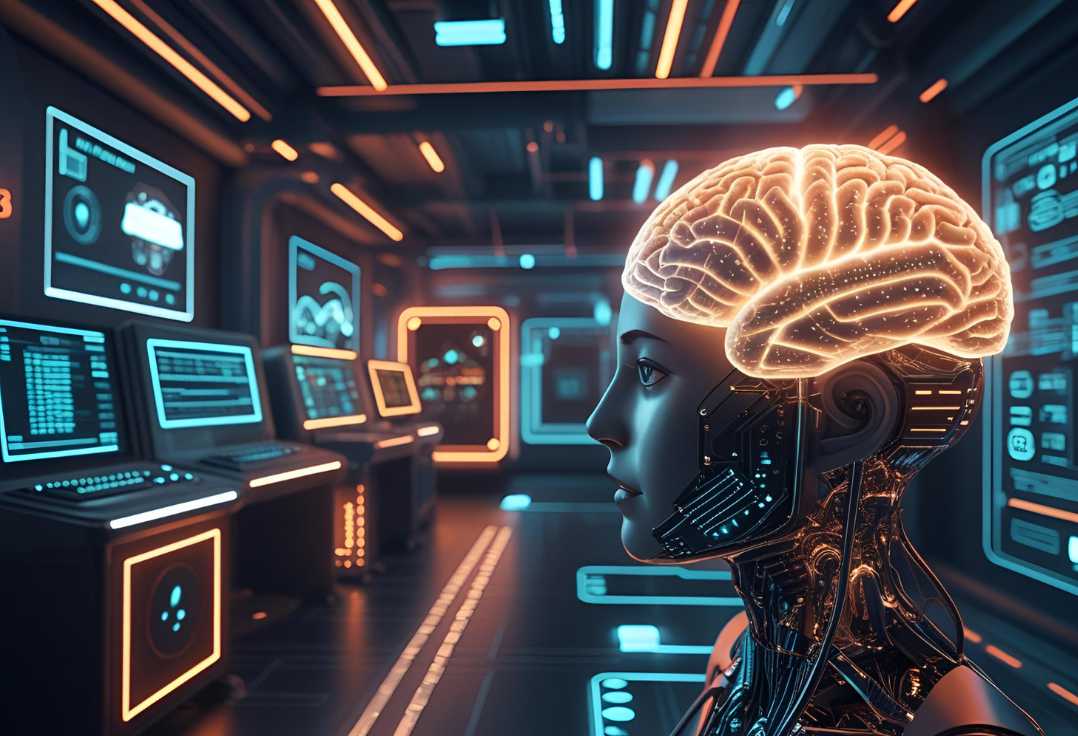
Introduction: The Dawn of Intelligent Machines
Artificial Intelligence (AI) and Machine Learning (ML) have emerged as the most transformative technologies of the 21st century. From revolutionizing healthcare diagnostics to powering autonomous vehicles and enabling real-time language translation, these technologies are reshaping every aspect of human life. This in-depth exploration traces the evolution of AI from theoretical concepts to practical applications, examines current breakthroughs, and peers into the future of intelligent systems.
Section 1: The Historical Foundations of AI (1950s-1990s)
1.1 The Birth of Artificial Intelligence
- Alan Turing’s Legacy (1950): The Turing Test and theoretical foundations
- Dartmouth Conference (1956): The official birth of AI as a field
- Early Symbolic AI: Expert systems and rule-based approaches
1.2 The First AI Winters
- Limitations of early AI systems
- Funding crises and disillusionment periods
- The resilience of AI research during dormant phases
1.3 Machine Learning Emerges
- The development of basic algorithms:
- Linear regression (1950s)
- Decision trees (1960s)
- Nearest Neighbor algorithm (1967)
- The backpropagation breakthrough (1986)
Section 2: The Machine Learning Revolution (2000-2015)
2.1 The Rise of Statistical Learning
- Support Vector Machines (SVMs)
- Random Forests and ensemble methods
- The emergence of Bayesian networks
2.2 The Big Data Paradigm Shift
- How data availability transformed ML capabilities
- The Hadoop ecosystem and distributed computing
- Feature engineering best practices
2.3 Deep Learning’s First Wave
- Breakthroughs in neural network architectures:
- Convolutional Neural Networks (CNNs)
- Recurrent Neural Networks (RNNs)
- Long Short-Term Memory (LSTM) networks
- The ImageNet moment (2012)
Section 3: The Deep Learning Era (2015-Present)
3.1 Architectural Innovations
- Residual Networks (ResNets) and the depth revolution
- Attention mechanisms and the Transformer architecture
- Capsule Networks and new paradigms
3.2 The Hardware Revolution
- GPUs and TPUs: Enabling modern AI
- Specialized AI chips and neuromorphic computing
- Quantum computing’s potential impact
3.3 Natural Language Processing Breakthroughs
- From Word2Vec to BERT
- The GPT evolution: From 1 to 4 and beyond
- Multilingual models and low-resource language challenges
Section 4: Current State of AI/ML (2020s)
4.1 Generative AI Explosion
- Diffusion models and image generation
- Large Language Models (LLMs) capabilities
- Multimodal AI systems
4.2 Reinforcement Learning Frontiers
- Applications in robotics and control systems
- AlphaFold and scientific discovery
- Game-playing AI beyond Go and Chess
4.3 Edge AI and TinyML
- Bringing AI to embedded devices
- Federated learning and privacy preservation
- On-device learning challenges
Section 5: The Future of AI/ML (2025 and Beyond)
5.1 Theoretical Frontiers
- Neurosymbolic AI integration
- Causal reasoning in machine learning
- Continual/lifelong learning systems
5.2 Societal Impact and Challenges
- AI ethics and bias mitigation
- Job market transformations
- Regulatory frameworks and governance
5.3 Paths to Artificial General Intelligence
- Current limitations of narrow AI
- Cognitive architectures and hybrid systems
- Measuring progress toward AGI
Section 6: Practical Applications Across Industries
6.1 Healthcare Revolution
- Medical imaging diagnostics
- Drug discovery acceleration
- Personalized medicine
6.2 Financial Systems
- Algorithmic trading
- Fraud detection
- Risk assessment models
6.3 Smart Cities and Infrastructure
- Traffic optimization
- Energy grid management
- Predictive maintenance
6.4 Education Transformation
- Adaptive learning systems
- Automated grading
- Virtual teaching assistants
Section 7: Getting Started with AI/ML
7.1 Learning Pathways
- Foundational mathematics
- Programming skills
- Core ML concepts
7.2 Tools and Frameworks
- TensorFlow vs PyTorch
- Cloud AI services
- MLOps ecosystems
7.3 Building Your First Projects
- Kaggle competitions
- Open-source contributions
- Portfolio development
Conclusion: The Responsible Development of AI
As we stand at the precipice of potentially creating artificial general intelligence, the responsible development of AI systems becomes paramount. This guide has traced the remarkable journey from simple perceptrons to systems that can generate human-like text and solve complex scientific problems. The future of AI will be shaped not just by technological breakthroughs, but by our collective decisions about how to develop and deploy these powerful tools for the benefit of humanity.
Additional Resources
- Essential AI Research Papers
- Open-source learning materials
- Professional communities and conferences
More articles about AI :
AI Agents & Autonomous Systems: The Future of AI
How to Actually Make Money Online (No-BS Guide)
The Rise of Artificial Intelligence in Everyday Life


